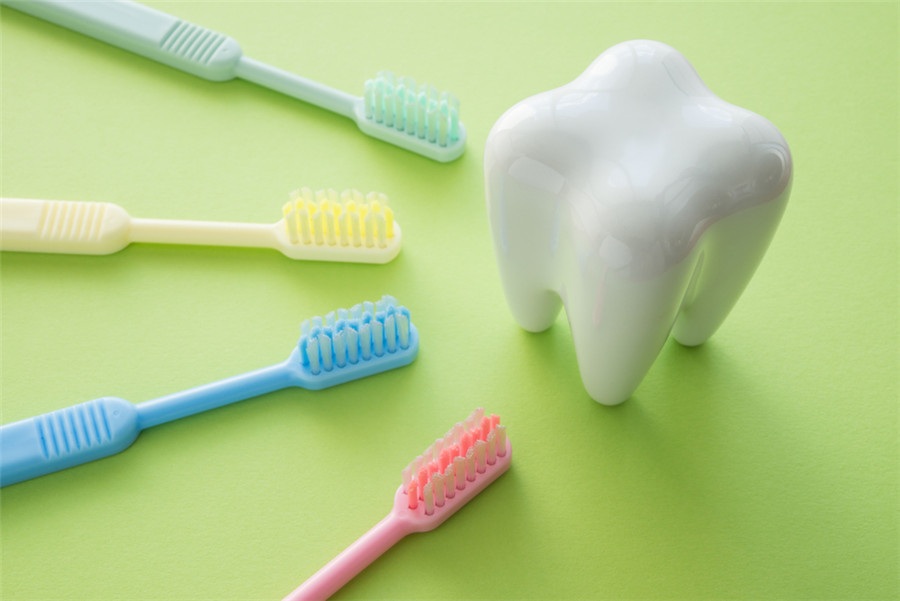
[I went to wash my teeth the day before yesterday, and today I found that the gap between my teeth has become larger. I heard that my gums have shrunk! ] This may scare off many people who are going to have their teeth washed. Of course, today we will not talk about tooth washing, but about [gingival atrophy].
Gingival shrinkage, which dentists call gingival shrinkage, may make people feel better if they don’t use the daunting word “withering”.
Gingival recession is very common clinically. Simply put, gingival recession toward the root of the tooth causes the root of the tooth to be partially exposed. The most intuitive manifestation is that when brushing your teeth, you find [teeth grow longer! ], some people will first appear teeth sensitive, sour symptoms.
First, the harm of gingival recession
First of all, gingival recession, especially in the anterior teeth, first leads to aesthetic problems: when you speak or laugh, you can often see the gap between the teeth, creating an area called the “black triangle”.
Secondly, due to the lack of gums to cover the root, many people will have symptoms of tooth sensitivity, and caries occurring in the root will also be more likely to occur.
In addition, many middle-aged and elderly people are always worried that their teeth will fall off after finding their gums shrink, and the whole person is not well.
Second, the common causes of gingival recession
According to a study by Turkish scholars, up to 78.2% of the population will have gingival recession, of course, most of them are very mild. In other epidemiological surveys, more than half of the people also have gingival recession problems.
What are the causes of gingival recession?
1. Age factor
Gingival recession can be regarded as an aging disease: the incidence rate increases with age;
2. Periodontitis patients
Gingival recession is more common in people suffering from periodontitis, especially in patients with more tartar.
3. Poor oral hygiene
People with poor hygiene are also more likely to suffer from this disease, because poor oral hygiene conditions are more likely to lead to gingivitis and periodontitis, leading to the destruction of periodontal tissue.
4. Improper brushing method
Adopting unusually hard brushing methods or using toothbrushes with hard bristles may directly stimulate gingival tissue, causing its damage and withdrawal.
5. Iatrogenic factors
For example, patients after orthodontic treatment are prone to gingival recession. Of course, this is also very related to the difficulty in maintaining oral hygiene during orthodontic treatment. Surgical treatment of the root tip, poorly designed prostheses (porcelain teeth, clasps of removable dentures, edges) can all lead to stimulation of gums. In addition, some drugs, such as cocaine (which is called a drug but may also be used medically), also increase the risk of gingival recession.
Three, gingival recession prevention
Starting from the simplest, do not use inferior toothbrushes, follow correct brushing methods and habits, and maintain oral hygiene.
Dental restoration and orthodontic treatment are carried out in regular medical places, so although gingival recession cannot be avoided, the risk will be less.
It will be very helpful to carry out dental examination every six months to one year, to carry out dental cleaning (tooth washing), and to remove deposited tartar.
In addition, some studies have pointed out that smoking is also a risk factor for gingival recession, so quitting smoking is also the only rule.
Four, tooth washing will not lead to gingival recession
Returning to the beginning, isn’t it said that [the gums have shrunk after washing teeth], how to wash teeth is still a preventive method?
In fact, there is no causal link between tooth washing and gingival recession.
The correct logic is this: tartar deposition leads to gingival and periodontal inflammation. Gingival has actually undergone irreversible recession, but it has not been detected due to inflammatory edema.
After tooth washing, gingival inflammation is removed, and the gingiva returns to its normal state, that is, the state of retreat, thus creating the illusion that gingival retreat is caused by tooth washing.
Five, the treatment of gingival recession
Once the gums shrink, it is really difficult to return to the original state through treatment.
Some non-surgical methods, mainly through periodontal cleaning and other cleaning methods, interrupt the adverse effects caused by tartar, oral hygiene and other reasons; People with high aesthetic requirements will improve through some aesthetic restoration-note, not [beauty crown]-; For patients with severe gingival recession, surgical methods can be used to make up for it.
